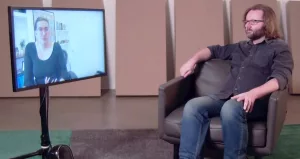In Canada, we have family class, immigration, student class, immigration, investor class, immigration, and a point system for the people who want to come here. I’ve become more familiar with this whole song and dance as I prepared to apply for full citizenship. And as I’ve listened to a number of my American writer friends who are now currently inventing new pledge classes on Patreon to pay off their immigration attorneys and fund their efforts to move here.
But what if, like the Canada Council for the Arts, for example, we granted ease of citizenship to those willing to work with Canada’s agencies to solve Canada’s problems? Could we save B.C. Fisheries? Could we clean up Toronto’s air? Could we end boil water advisories on First Nations reserves? Yes, we could. If we said, ‘Hey, before you can vote, maybe you’d like to learn more about how to make change.’
Maybe you’d like to learn what change means here in your new community. Maybe you’d like to meet your neighbors for and this is possibly my favorite, despite it not being about immigration, build more student housing and increase services for students in general. I teach undergrads in the Digital Futures Program at Oxford University, and the number one complaint my students have is the length of their commute.
Students are commuting for an hour each way, sometimes more. I have students who commute 90 minutes each way and rather than staying in town, they’re staying with their parents. They’re stuck at home to save money rather than learning how to live in different urban environments with different neighbors, with different friends. They’re not learning how to be good neighbors to new people, and they’re not learning the agency and resourcefulness of adulthood.
It’s very easy to complain about ‘kids don’t know how to do this, blah, blah, blah.’ Have we given them that chance? Is it affordable for them to live in cities? Not in Toronto. It isn’t. Not in Vancouver it isn’t. Why do we expect them to know so much when they can’t even try it out? After this week and the events in Parkland, Florida, we’ve seen the fire that our students can bring to any conversation about the future.
And I have full faith in my students to bring about the change that we need. The young people coming up that we have this generation are some of the brightest, savviest, most uncompromising and dedicated group of overachievers I have ever met. And I went through an ODE, an honors program at a Jesuit university. We need to give those students a chance.
And that chance starts with letting them live affordably, debt-free, with access to health care and culture and new experiences. We cannot expect change in our cities if we price young people out of them, because imagine if we encourage them to stay and live together in a community. What ideas would they have at three in the morning over pizza because they don’t have to go an hour outside of town?
What businesses would they create? What books would they write? What problems would they solve? What would they change? Because it might be everything. But they need the space. This is a question about space. Who has access to space? Who can take up space? Who is worthy of taking up space?
That’s the question of cities. And it always has been. And speaking of which, in my final 2 minutes, my last request: Build smart, sustainable housing for families with children and mandate zoning for low-cost daycare and elder care in new condos. All of our greenest buildings across Canada should not be rabbit hutch condos for single people who eventually have to move once they have a family.

